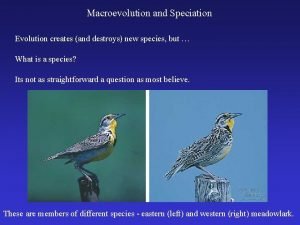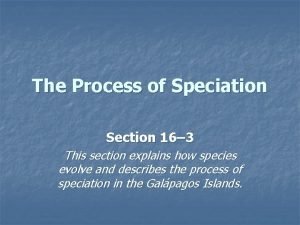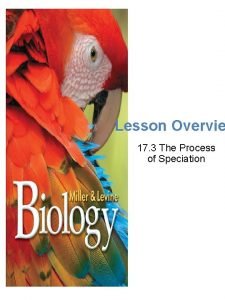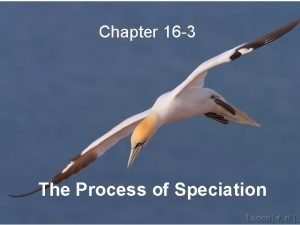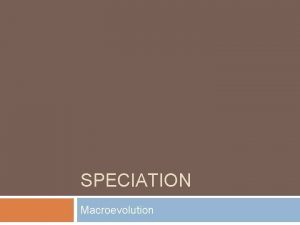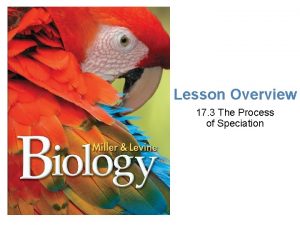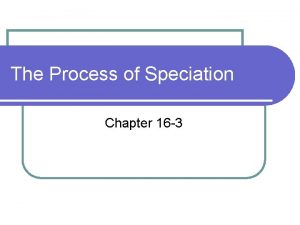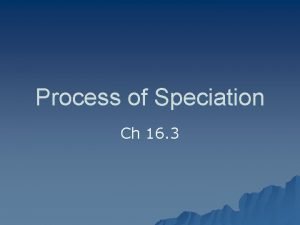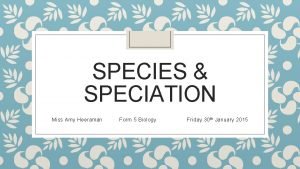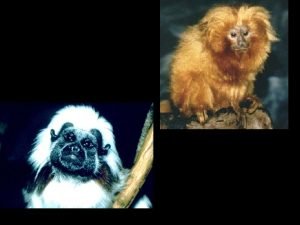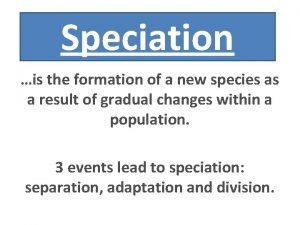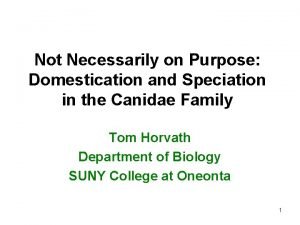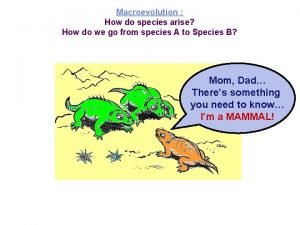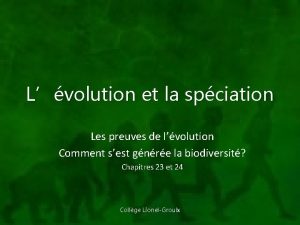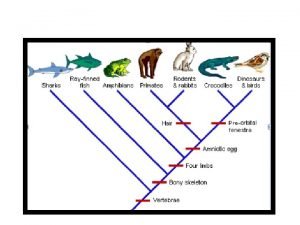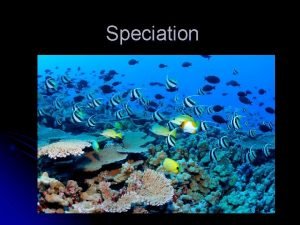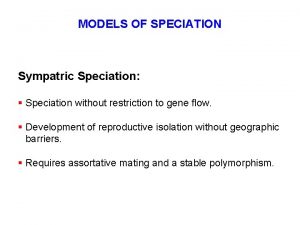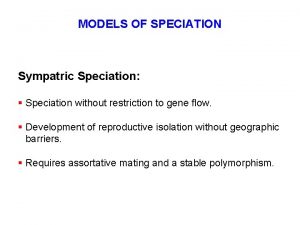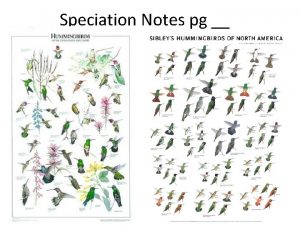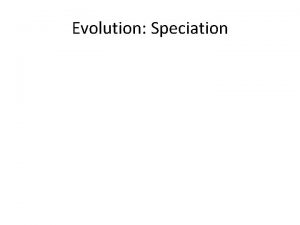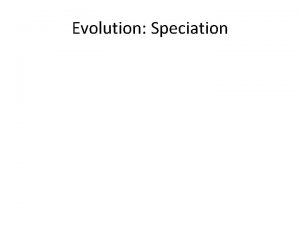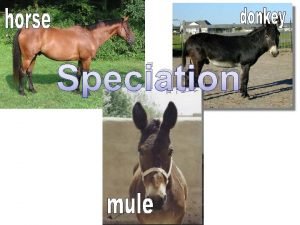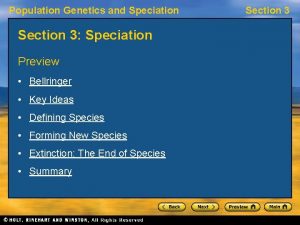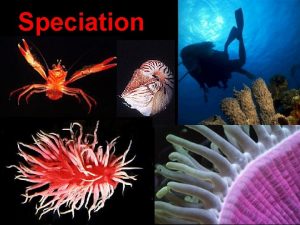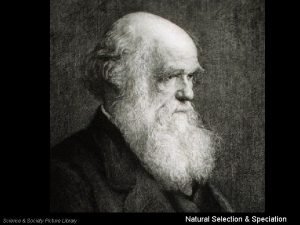Process of Speciation Ch 16 3 Intro to
















- Slides: 16

Process of Speciation Ch 16. 3

Intro to Speciation Recall, biologists define a species as a group of individuals that breed and produce fertile offspring

Intro to Speciation Therefore individuals in the same species share a common gene pool. As genetic change occurs in one individual, it can spread through the population via its offspring. If this change increases “fitness” it will soon be found in many within the population.

Isolating Mechanisms As new species evolve, populations become reproductively isolated. Reproductive isolation can occur as a result of: u. Behavior Isolation u. Geographic Isolation u. Temporal Isolation

Behavioral Isolation u Difference in courtship rituals Western and Eastern Meadowlark (Different mating songs)

Behavioral Isolation u Feeding Habits - change in food preference No gene flow occurs now because they eat, mate, and lay their eggs on different hosts now. Fruit flies switched from Hawthorn fruit to Apple fruit introduced from England Rhagoletis pomonella

Geographic Isolation u Two Populations are separated by barriers such as rivers, mountains, or bodies of water

Geographic Isolation u Another Example of Speciation due to Geographic Isolation (Colorado River – 10, 000 years ago) Abert Squirrel (Sciurus aberti) Kaibab Squirrel (Sciurus aberti kaibabensis)

Temporal Isolation u Two or more species reproduce at different times. Example: 3 similar species of orchid in same forest release pollen on different days (can not pollen one another)

Darwin’s Discovery Galapagos Island Finches

Darwin’s Discovery The finches looked so different he thought they were blackbirds, warblers, & other kinds of birds. After returning home, an ornithologist told him they were all finches

Darwin’s Discovery He then hypothesized: – They had descended from a common ancestor. – Natural selection shaped the beaks as they adapted to eat different foods

Testing Natural Selection in Nature Peter and Rosemary Grant of Princeton University decided to test Darwin’s hypothesis. They figured it relied on two testable assumptions. 1. Sufficient Variation among species 2. Natural Selection due to “fitness” of the variation

Testing Natural Selection in Nature What the Research u u Grant’s Finch Showed: There is great variation among inheritable traits During drought, food becomes scarce or gone and big beaks more likely to survive. Big beak birds tend to mate with other big beak birds, resulting in increase in average beak size of the population The next generation of finches had bigger beaks than the generations before

Testing Natural Selection in Nature After 20 years of banding & measuring finches, the Grants had demonstrated that evolutionary changes in finch beak size & shape occur rapidly in response to severe environmental changes in the Galapagos Peter and Rosemary Grant (Princeton University)

Follow these Steps as Review of Speciation in Darwin’s Finches 1. Founders Arrive on an Island 2. Separation of Population (some birds of species A cross to another island) 3. Change in Gene Pool (natural selection causes species A & B to evolve. ) 4. Reproductive Isolation (now even if species A & B appear in same locale, gene pool remains isolated) 5. Ecological Competition (increase difference as species A & B compete. ) 6. Continued Evolution
 Sympatric speciation vs allopatric speciation
Sympatric speciation vs allopatric speciation Section 16-3 the process of speciation
Section 16-3 the process of speciation Steps of speciation
Steps of speciation Section 16–3 the process of speciation
Section 16–3 the process of speciation Speciation process
Speciation process Speciation process
Speciation process Section 16-3 the process of speciation answer key
Section 16-3 the process of speciation answer key 16-3 the process of speciation
16-3 the process of speciation Lumptys
Lumptys Taxonomic species concept
Taxonomic species concept Speciation, or the formation of new species, is
Speciation, or the formation of new species, is Allopatric speciation example
Allopatric speciation example Factors affecting gene frequency slideshare
Factors affecting gene frequency slideshare Cladogram for dogs
Cladogram for dogs Hybrid fertility
Hybrid fertility La spéciation
La spéciation Allopatric speciation def
Allopatric speciation def
